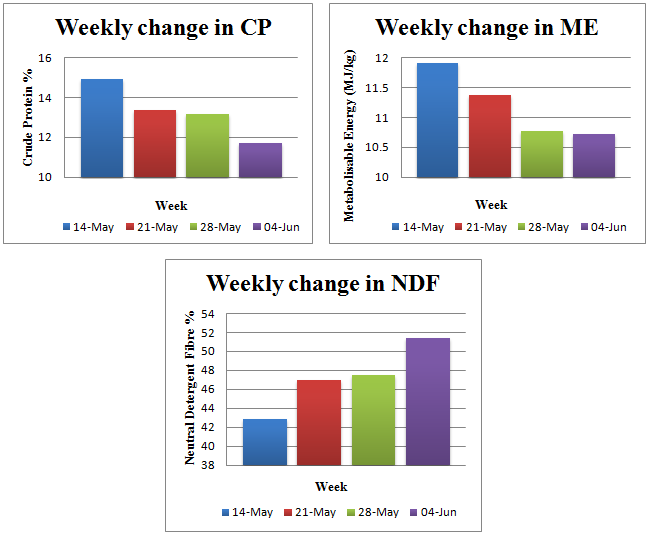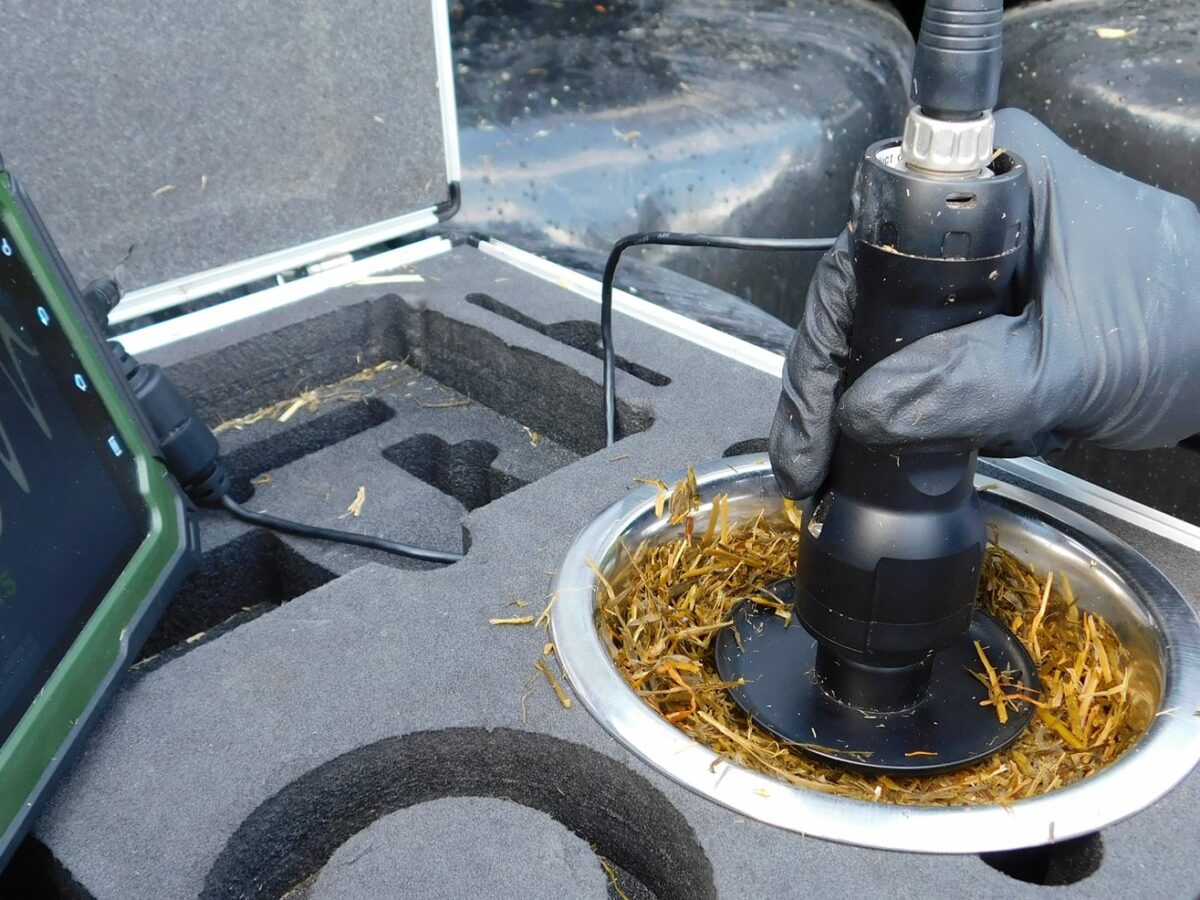By Aaron Jones
Silage quality is fundamental in maximising cow performance and minimising feed costs, irrespective of the production system. With a rain washed spring,
followed by a record breaking drought, grass management has proven a significant challenge this year; with the greatest effect likely to be felt this
winter.
1st and 2nd Cut Silage Results
From a pool of over 100 samples, evidently both 1st and 2nd cut averages portray a relatively positive image in terms of nutritional
value; as seen below.
Table 1. Comparison of 2018 and 2016/17 Silage Analysis Averages

In contrast to 2016-17 figures, dry matter is significantly higher, particularly in second cuts, with numerous samples analysed at >50%DM; however some
late 2nd cuts are yet to be tested. It is these extremely dry silages with elevated risks of secondary fermentation giving the greatest
cause for concern.
With many customers commenting on reduced bulk or having fed some of their winter reserves already, the decision to make an extra cut of silage is proving
a common theme.
Though a multi-cut approach may not suit every farm, it does offer improved forage quality and additional feeding; potentially a more feasible option than
purchasing fodder this year.
If you are concerned about a shortage of silage, follow this link for a quick and easy to use forage budget calculator. https://nutreco.showpad.com/share/9S3QTbYHgnBovjYlUSLy
Benefit of Cutting Early
Cutting silage early is often easier said than done, especially in our climate; however the performance and financial benefits are there to be seen.
As the days pass, stem material rapidly increases at the expense of leaf growth, diminishing silage quality.
From data collected on this years 1st cut silages; each weeks delay in cutting resulted in an average loss of 1.07% crude protein, 0.91MJ/kg
of metabolisable energy and an increase of 2.85% in neutral detergent fibre.
Figure 1. Effect of Delaying Harvest of 1st Cut Silage by 1 Week

To put this into perspective, based on this years 1st cut averages; a loss of 0.91MJ/kg ME for a dairy cow consuming 30kg of silage, would
equate to a reduction of 1.77 litres of milk sustained from forage. On a 100 cow dairy enterprise, with current milk price at 27ppl, this equates
to a loss of £47.79 a day or a substantial £8,602.20 over a 6 month housed period.
With this in mind, prepare to cut silages a week earlier than expected. After all, you wouldn’t graze high performing cattle on stemmy grass, so why
make silage from it?
Managing Dry Silages
Though the persistent dry spell provided perfect conditions for silage making, it will also present some new obstacles.
Contrary to last summer’s wash-out, many farmers are facing the challenge of feeding and preserving considerably dry silages this winter.
Preservation
With the majority of this years silage cut and ensiled, the focus now turns to reducing wastage at feeding.
Minimising surface area exposed is a key factor in managing aerobic deterioration. Aim to keep the clamp face clean, using a sharp shear grab; and
if necessary, take half grabs to allow you to move across the silo face much quicker.
If constructing a new silo, a long, narrow, open ended clamp is recommended; allowing access to older silage when desired and reducing the area of
fodder susceptible to spoilage.
For those planning on placing another cut on top of a dry 1st or 2nd cut, consider adding a layer of fresh grass on the surface,
helping to create a natural seal.
Feeding
With the optimum total mixed ration (TMR) dry matter considered around 45%, some farmers will have to deliberate adding water to the mix, with many
silages already above this value.
A technique originating in Denmark, the addition of water to the ration should not only increase dry matter intakes (DMI), but also suppress the amount
of sorting by binding smaller particles to larger fibre components; promoting the consumption of a more consistent TMR.
As a general rule of thumb, add 4-4.5 litres of water per head to the mix, or 100 litres per tonne; however this will vary depending on the starting
and target dry matter of the ration.
Where secondary fermentation has taken place, the risk of moulds and mycotoxins are substantial; with the potential to reduce intakes, impair nutrient
absorption and suppress immune response; ultimately hindering animal performance and eating into profit margins.
The inclusion of binders such as Ultrasorb R, offered by Chestnutts, may be worthwhile considering; reducing the toxic exposure of consuming livestock.
If you find feed heating when presented, adding organic acids such as Selko-TMR to the diet feeder may be beneficial, reducing yeast fermentation and
prolonging the shelf life of the TMR; whilst maintaining the nutritional value of the ration.
Want your forage analysed?
Testing your forage allows us at Chestnutt Animal Feeds to select or create a feed tailored to your animal’s specific needs and performance targets.
With the use of our own NIR4 forage analysis machine, fodder can be analysed on farm within minutes, providing real time data to help you unlock the
full potential of your forage.
If having your silage analysed interest you, please feel free to contact the mill at 028 2074 1354 or drop in a sample.


